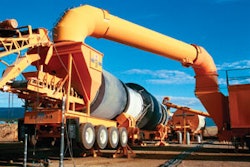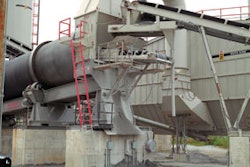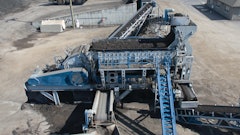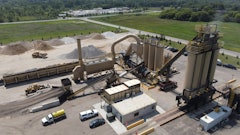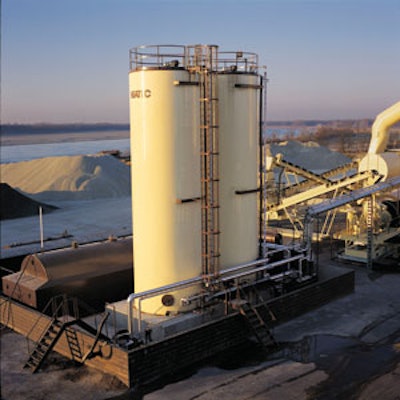
While not the most exciting piece of equipment at an asphalt production facility, the liquid asphalt binder storage tank plays a vital role in a successful plant operation. Periodic maintenance is critical to tank performance and eliminating unwanted downtime.
Heatec, an Astec Co. and manufacturer of AC tanks, heaters, preheaters and portable fuel tanks, suggests a preseason maintenance program, as well as a monthly maintenance program.
At the beginning of each paving season, the following checklist is recommended:
- Tank cleanout — It's probably best to perform this particular task at the end of your paving season before residues have a chance to harden. Carbon deposits should be scraped off the interior surface of the tank. An annual cleaning of your tank will go a long way to maintain performance, avoid contaminants and other heavy build-up from plugging the pump and other operating devices inside the tank, keep the interior ladder free of unsafe residue, and generally help prevent unnecessary glitches when you want your plant operating at full capacity during the paving season.
- Vent cleanout — Fumes from stored AC can condense on the vent opening. A blocked vent can cause the tank to collapse or rupture. Keeping the vent open is critical to maintaining a safe work environment.
- Inspecting manways — A vertical AC tank general has two entry points for servicing the interior of the tank – a latched manway located on top of the tank and a bolted-on manway located on the side of the tank approximately three feet from the ground. It's important to check the seals on these access covers to make sure gases are not able to escape the tank.
- Inspecting backup high-level switch — Tanks are equipped with a backup high-level switch designed to turn off the pump and prevent an overflow of AC. Make sure the float assembly is free of residue and other obstructions that may prevent it from activating the switch.
- Inspecting valve and pipe leaks — Check AC pipes and valves, as well as hot oil pipes and valves (used to heat the AC in the tank) for leakage, especially joints or where gaskets may be worn. Taking care of these potential problems before the season begins will help avoid the potential of having to empty your tank to repair a leak during peak production.
- Inspecting radar device — On tanks equipped with a radar system, a device that monitors AC levels inside the tank, check for residue accumulation on the antenna inside the tank. If the antenna is clean and you're still not getting an accurate reading, you may have to recalibrate the system (establish readings based on the profile of the tank). It's important to know how much AC is in your tank, and not allow the level to drop below the heating coils at the bottom of the tank. If this happens, AC fumes will begin to coke against the heating elements.
- Inspecting gauge board — If your AC tank does not have a radar system, it is then equipped with an exterior gauge board to measure the level of AC. The board operates off an interior float connected to a cable. The float is designed to shut off the AC pump when the tank is full and also when the AC level falls below a certain point. Make sure the cable is free of residue and can move freely through the P-trap fitting at the top of the tank. Also, make sure the trap has enough oil to lubricate the interior pulley mechanism.
- Inspecting the temperature control valve — The heating system of your tank should be calibrated to 325 degrees F. Make sure your oil dry wells are full.
- Inspecting tank insulation — The six-inch fiberglass insulation should be checked to prevent heat loss, as well as rust to your tank. The skin covering the insulation should be sealed, and any tears or rips should be repaired.
- Inspecting the mixer gear box — AC binders requiring polymer additives are generally blended inside the tank with an exterior mixer gear box attached to impellers inside the tank. If the temperature of the AC drops below 280 degrees F, the mixer gear box will not function. Cooler temperatures make the polymer AC stiffer and harder for the mixer gear motor to turn the impellers. Check for gear wear and lubricate the mechanism at time of inspection.
Monthly inspections
During operation of your asphalt production facility, you still need to inspect your AC tank on a monthly basis. Check your gauge board or radar system (if equipped) to make sure high and low levels are accurately recorded. This is very important to prevent overloading the tank and emptying the tank below its heater coils. Also, check the back-up shutoff system.
Lubrication is the other most important monthly maintenance practice plant operators should initiate. Valves, the mixer gear box and the gauge board P-trap should all be checked and lubricated if need be on a monthly basis during the production season.
And finally, check all vents monthly to make sure they're free of residue. If gases cannot escape, you not only run the risk of damaging your tank, but also exposing your employees to an unsafe work environment.




